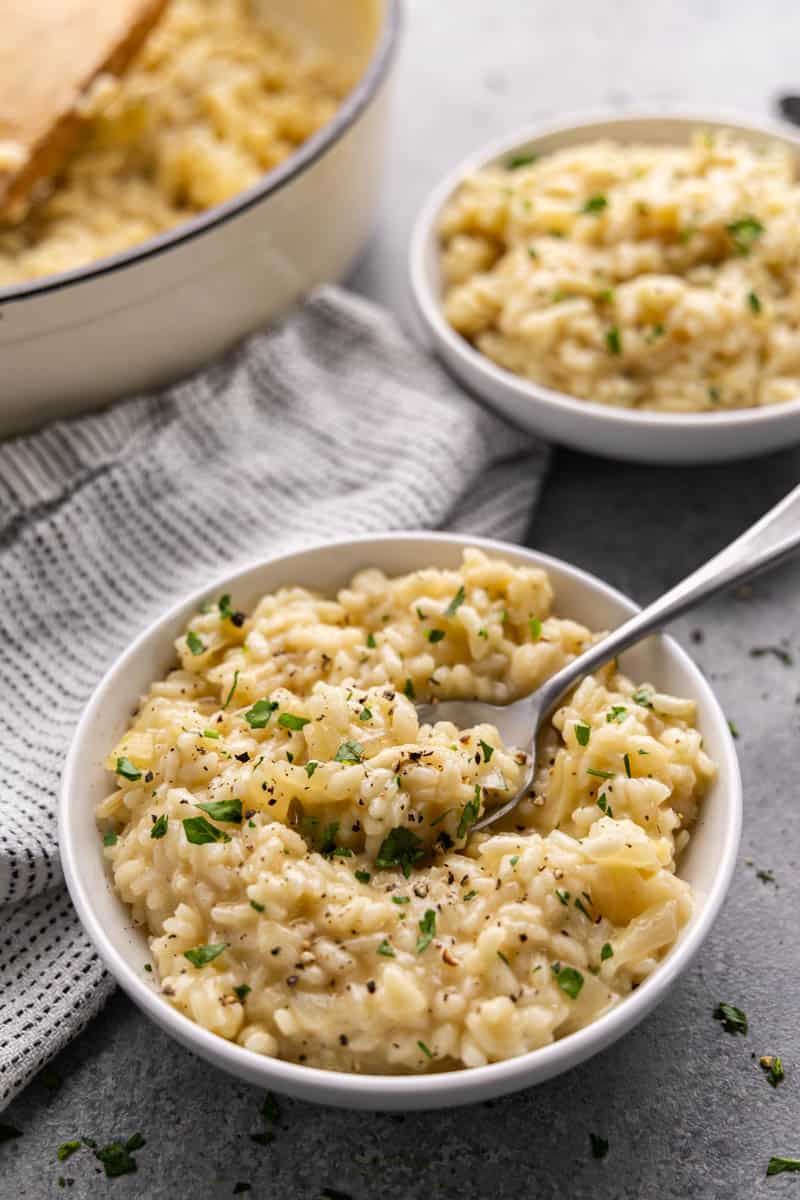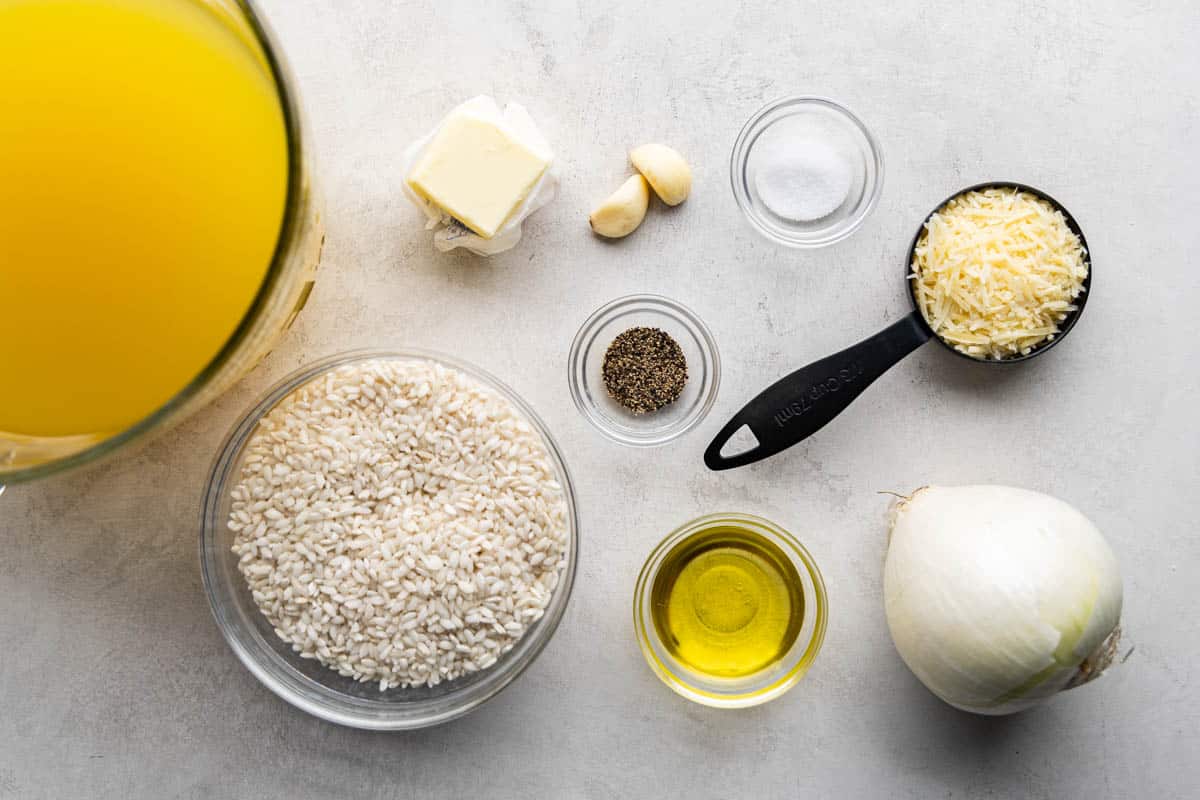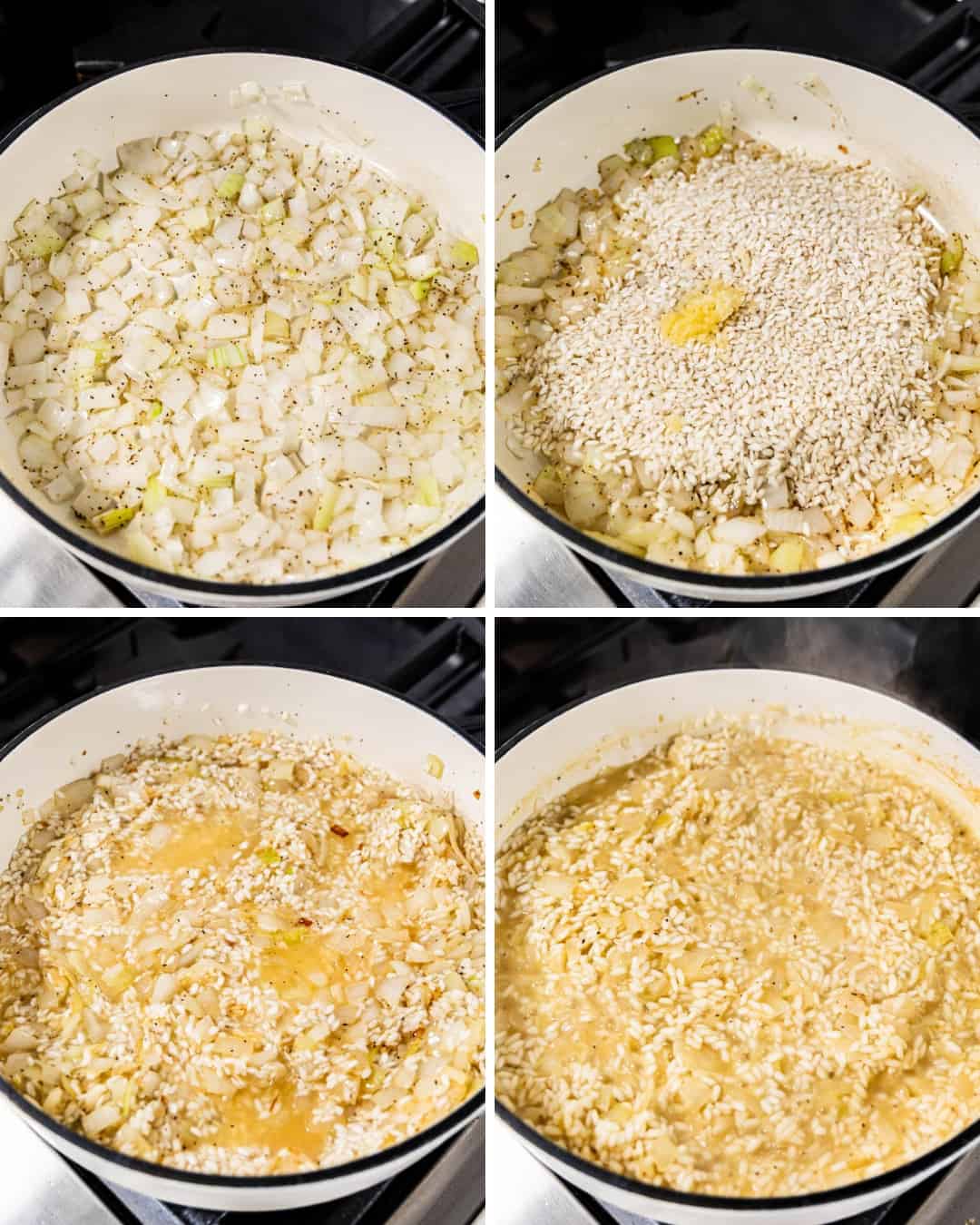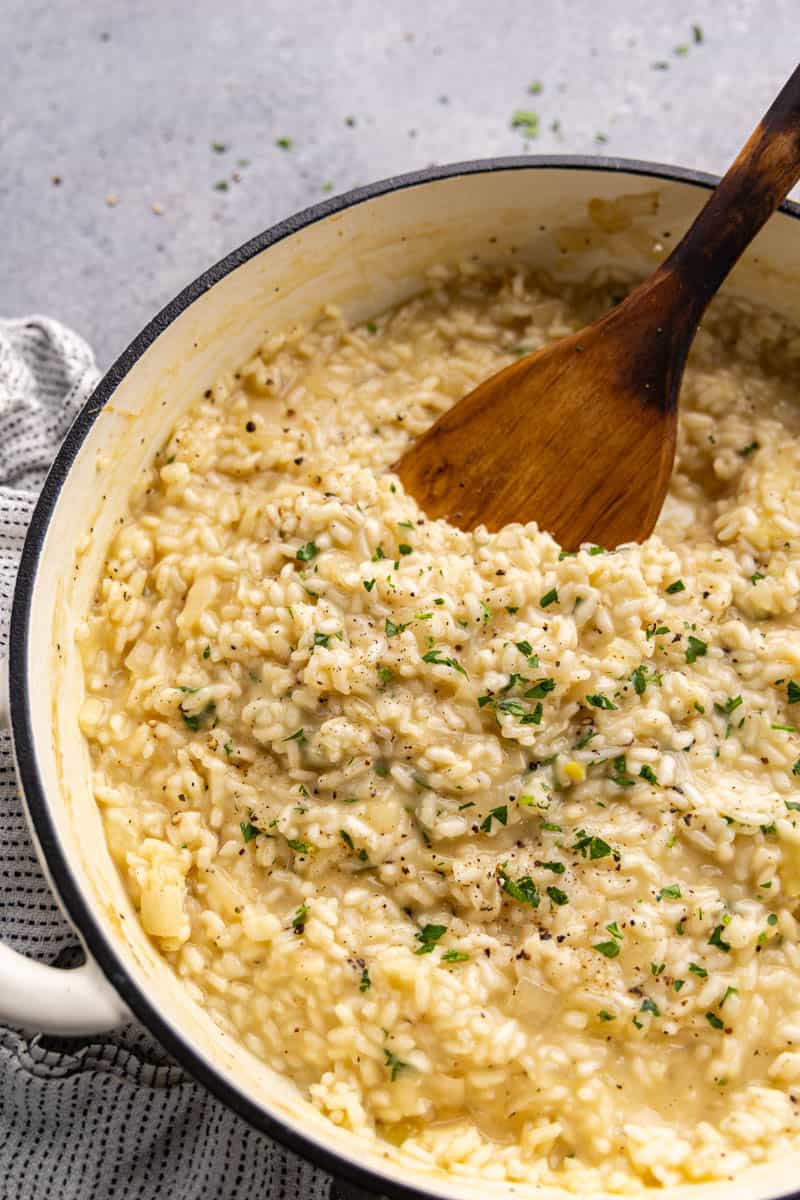[ad_1]
Risotto often carries the reputation of a gourmet meal that requires a professional touch, but with our Classic Risotto recipe, you can master this culinary staple in your own kitchen. We’ve taken our culinary training and written our recipe specifically with home cooks in mind. This recipe will guide you through each step with visual indicators to look for, ensuring you achieve that sought-after creamy consistency every time. We provide clear, easy-to-follow instructions and practical tips, making this iconic dish accessible even to first-time cooks. Whether you’re looking to impress guests or simply indulge in a comforting meal, our Classic Risotto will bring you a restaurant-quality recipe from the coziness of home.
Why Our Recipe
- Approachable detailed instructions to ensure anyone of any skill level can make it.
- Doesn’t include wine, but gives it as an option in the notes so that you can choose.

Our Classic Risotto recipe seeks to demystify the techniques used by chefs to achieve the ideal texture and flavor without overwhelming you with information. The importance of toasting the Arborio rice to unlock its nutty flavor, and the gradual addition of simmering broth to create a velvety consistency, are included right there in the recipe where you need it. This guide not only instructs but also educates, providing insights into what to look and smell for each step of the way. If you can stir, you can make risotto.
Ingredient Notes

- Chicken Broth: use a low-sodium chicken broth for better control over the saltiness of your dish. Vegetable broth can be used.
- Olive Oil: ideal for sautéing at the temperatures required to brown the onions without burning.
- White Onion: dice your onion finely to ensure it blends seamlessly into the creamy texture of the finished dish.
- Salt and Pepper: These seasonings are used twice: initially to enhance the flavor of the onions and again at the end to adjust the overall taste. Start with the recommended amounts and adjust according to your preference at the end of cooking.
- Garlic: it should sauté just until fragrant to prevent any bitterness.
- Arborio Rice: has the perfect starch content to achieve the classic creamy texture of risotto without becoming mushy. Unlike long-grain rice, Arborio releases starch as it cooks, which helps to thicken the broth.
- Butter: can use unsalted butter to better control the overall saltiness of the dish, adjusting the seasoning as needed after adding.
- Parmesan Cheese: use a good quality Parmesan for the best results and be sure to freshly grate it yourself for the best melting. Pregrated cheese has an additive to prevent clumping that negatively impacts melting.

The Science: Simplified
When we toast Arborio rice in olive oil, we’re not just flavoring it; we’re also altering the starch on the surface of the rice. This process helps the grains maintain some structure and bite amidst the creaminess. The slow addition of hot broth is crucial because it allows the rice to cook evenly and release starch slowly, thickening the liquid gradually to create that signature velvety consistency without becoming gummy.
The Cookware
Using a wide, shallow pan like a skillet or braising pan helps the liquid evaporate evenly, which is crucial for the proper cooking of risotto. A heavy-bottomed pan will also distribute heat more evenly, preventing hot spots that could cause the rice to burn.

Common Mistakes and How to Avoid Them
- Rushing the Cooking Process: The key to creamy risotto is slow and gradual absorption of broth. Adding broth too quickly can lead to a dish that’s unevenly cooked. To avoid this, add broth one ladle at a time, only adding more once the previous amount has been almost fully absorbed.
- Not Stirring Enough: Regular stirring is crucial to help release the rice’s starches, which give risotto its creamy texture. Make sure to stir frequently, especially towards the end of cooking.
- Using Cold Broth: Adding cold broth to hot rice can shock the rice and affect its ability to cook evenly. Always keep your broth gently simmering on a separate burner so it’s ready to add hot, which helps maintain the cooking rhythm and temperature.
- Overcooking the Rice: Risotto should be al dente, or firm to the bite. Overcooking it can lead to a mushy, sticky texture. Start tasting the rice a few minutes before the estimated cooking time is up to ensure it retains some bite.
- Underseasoning: Seasoning risotto correctly is essential since rice can be quite bland on its own. Adjust as needed before serving.
Storage and Reheating Instructions
Storage: Risotto is best enjoyed fresh, but if you have leftovers, allow it to cool to room temperature before transferring it to an airtight container. It can then be refrigerated for up to 3-4 days. Avoid leaving risotto at room temperature for more than two hours to prevent bacterial growth.
Reheat risotto on the stove in a small pan or skillet over medium heat. Stir in a splash of broth or water to loosen it up, as risotto tends to thicken when chilled. Continuously stir while gently heating to evenly warm the risotto and prevent it from burning on the bottom.
It’s not recommended to freeze risotto as it gets mushy and broken upon thawing.
More delicious rice recipes
[ad_2]
Source link






